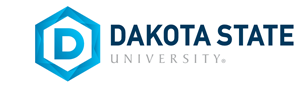Date of Award
Spring 2020
Document Type
Dissertation
Degree Name
Doctor of Philosophy in Information Systems (PhDIS)
Department
Business and Information Systems
First Advisor
David Zeng
Second Advisor
Ronghua Shan
Third Advisor
Linda Parks
Abstract
Deep neural networks have revolutionized the performances of many machine learning tasks such as medical image classification and segmentation. Current deep learning (DL) algorithms, specifically convolutional neural networks are increasingly becoming the methodological choice for most medical image analysis. However, training these deep neural networks requires high computational resources and very large amounts of labeled data which is often expensive and laborious. Meanwhile, recent studies have shown the transfer learning (TL) paradigm as an attractive choice in providing promising solutions to challenges of shortage in the availability of labeled medical images. Accordingly, TL enables us to leverage the knowledge learned from related data to solve a new problem.
The objective of this dissertation is to examine the effectiveness of TL systems on medical images. First, a comprehensive systematic literature review was performed to provide an up-to-date status of TL systems on medical images. Specifically, we proposed a novel conceptual framework to organize the review. Second, a novel DL network was pretrained on natural images and utilized to evaluate the effectiveness of TL on a very large medical image dataset, specifically Chest X-rays images. Lastly, domain adaptation using an autoencoder was evaluated on the medical image dataset and the results confirmed the effectiveness of TL through fine-tuning strategies.
We make several contributions to TL systems on medical image analysis: Firstly, we present a novel survey of TL on medical images and propose a new conceptual framework to organize the findings. Secondly, we propose a novel DL architecture to improve learned representations of medical images while mitigating the problem of vanishing gradients. Additionally, we identified the optimal cut-off layer (OCL) that provided the best model performance. We found that the higher layers in the proposed deep model give a better feature representation of our medical image task. Finally, we analyzed the effect of domain adaptation by fine-tuning an autoencoder on our medical images and provide theoretical contributions on the application of the transductive TL approach. The contributions herein reveal several research gaps to motivate future research and contribute to the body of literature in this active research area of TL systems on medical image analysis.
Recommended Citation
Boit, James, "The Effectiveness of Transfer Learning Systems on Medical Images" (2020). Masters Theses & Doctoral Dissertations. 344.
https://scholar.dsu.edu/theses/344
Included in
Analytical, Diagnostic and Therapeutic Techniques and Equipment Commons, Data Science Commons, Health Information Technology Commons, Other Medicine and Health Sciences Commons

